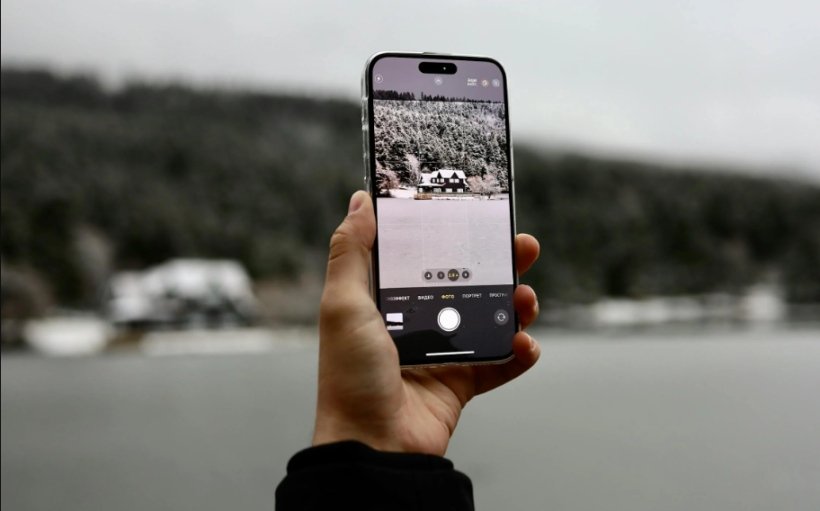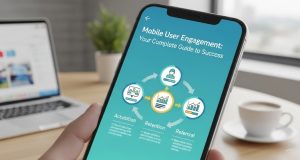Targeting Mobile Users in Specific Areas

Mobile users are everywhere. With around 7 billion smartphone users globally, our phones have become their own expansion. But when it comes to marketing, it’s not just about killing the right demographic to target mobile users. This is about timely and provides relevant messages that match that time and what they need at that time.
If you want to create hyperlocalized marketing campaigns that catch people, when and where it matters, this guide will show you how to target mobile users in specific areas.
Why Targeting Mobile Users by Location Is a Game-Changer
The ability to target mobile users in specific geographic areas has completely transformed marketing strategies for businesses of all sizes. Here’s why it’s so impactful:
- Timeliness: Mobile camempaigns allow you to connect with users in real-time. Whether they’re near your store or attending an event, timing can play a big role in conversions.
- Personalization: Using location-based data enables hyper-targeted messages that feel highly relevant to mobile users. People are more likely to respond when the offer or message resonates with their immediate needs.
- Efficiency: Targeting specific areas means you’re not wasting time or advertising budget promoting to irrelevant audiences. Your efforts stay laser-focused.
Strategies for Targeting Mobile Users in Specific Areas
1. Use Geofencing to Pinpoint Locations
Geofencing involves setting up virtual boundaries around a specific location. When someone with a mobile device enters that designated area, they can receive a marketing message like a push notification, SMS, or in-app ad.
Example:
A coffee shop might create a geofenced radius of two blocks around its location. When a mobile user enters the area, they could receive a text saying, “Need a pick-me-up? Show this text for 10% off your latte at BrewCo!”
Tips for Success with Geofencing:
- Ensure precision by analyzing foot traffic or behavior patterns in the area.
- Don’t oversaturate users with notifications; limit it to one or two messages to avoid annoyance.
- Use clear CTAs like “Visit Now” or “Tap Here to Claim.”
2. Tap Into Location-Based Advertising
Platforms like Google Ads and Facebook Ads allow hyperlocal targeting by narrowing down audiences based on geographic locations, even to a single ZIP code or mile radius around a business.
Example:
A fitness studio in Los Angeles could target mobile users within a 5-mile radius of their location by running Facebook ads with the headline, “Stop Searching. The Best Yoga Classes Are Minutes Away 🚶♀️.”
Combining location filters with demographics (e.g., targeting women ages 25-40) can make your ads even more relevant to mobile users.
Best Practices for Location-Based Ads:
- Use ad copy and visuals that directly reference the user’s area (e.g., “Just down the street in Brooklyn!”).
- A/B test location-based campaigns regularly to find the best-performing radius or message.
- Pair with seasonal events or local happenings to stand out.
3. Utilize Beacon Technology
Beacon technology uses small Bluetooth-enabled devices to send notifications or messages to nearby mobile devices. Unlike geofencing, which targets larger radii, beacons are meant for hyper-specific locations, like inside a store or department.
Example:
A retail store could install beacons within its aisles. When a shopper enters the electronics section, they might receive a push notification offering a 15% discount on headphones.
Why Beacons Work:
- They enhance the in-store experience with tailored offers.
- You can use them to upsell or cross-sell with precise targeting.
- They’re great for tracking customer behavior, such as foot traffic patterns.
4. Leverage Mobile Search Ads with Local Extensions
If mobile users are searching for businesses “near me,” local ad extensions can help your business show up at the top of results. Google Ads Local Extensions, for example, display your address, hours, and a map, showing users how close they are to you.
Example:
A restaurant targeting local patrons might bid on keywords like “best pizza near me” or “lunch specials in Denver” to show up in searches. The mobile ad could include a “Get Directions” button.
Tips for Mobile Search Ads:
- Focus on high-intent, local keywords like “plumber nearby” or “urgent care open now.”
- Make sure business hours and contact info are up-to-date to avoid user frustration.
- Use ad copy to highlight proximity and convenience (e.g., “Hot pizza just 5 minutes away!”).
5. Enable Proximity Marketing via Wi-Fi
Wi-Fi-based targeting enables businesses to connect with mobile users who log into a specific network. By offering free Wi-Fi to customers, companies can display custom messages or ads during the login process.
Example:
A hotel could showcase an offer for discounted spa treatments as guests connect to its complimentary Wi-Fi.
Benefits of Wi-Fi Targeting:
- It captures mobile users who are already in your location or property.
- It encourages on-the-spot purchases or bookings.
- It provides an opportunity to collect valuable user data (e.g., email addresses) for future campaigns.
6. Optimize for Mobile SEO
Even if you aren’t running location-specific campaigns, optimizing your website for mobile search is non-negotiable. Google’s algorithms prioritize mobile-friendly websites, especially for location-based searches.
Key Steps for Mobile SEO:
- Make sure your site is responsive and loads quickly.
- Incorporate location-based keywords in titles, meta descriptions, and body text.
- Verify your Google My Business listing to ensure customers can find your business nearby.
7. Encourage App-Based Engagement
For businesses with their own apps, targeting via app-based notifications can drive more foot traffic to specific locations. You can even tailor app marketing campaigns based on user behavior data or location history.
Example:
A grocery store’s app could notify users about flash sales when they’re within a mile of the store, encouraging them to stop by.
App Marketing Tip:
Include rewards or loyalty schemes within your app to incentivize users to act on targeted marketing messages.
Challenges and Ethical Considerations in Location-Based Marketing
While targeting mobile users in specific areas has undeniable benefits, marketers must tread carefully to avoid privacy violations. People want personalized experiences, but not at the expense of feeling tracked or invaded.
Here are some tips to market ethically:
- Always ask for consent before accessing location data.
- Be transparent about how data is collected and used.
- Provide clear opt-out options for users.
Leverage Mobile Marketing for Local Success
Targeting mobile users in specific areas is an important part of modern marketing strategies. With devices such as geoofing, site -based advertising and beacons, the business can create relevant experiences that have real results. When adapting for mobile SEOs and tapping the involvement in the app, you create a comprehensive approach to draw the attention of today’s consumers on-a-go.
Start with one or two strategies, measure your results and limit your campaigns. And remember that the key to success is to create a couple of data insights with creative messages that feel personal and valuable.
Are you ready to raise your local marketing game? Search the latest equipment to increase your mobile campaigns and see the difference they can make!





